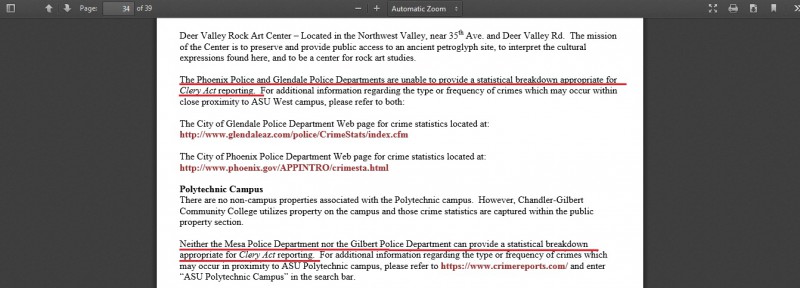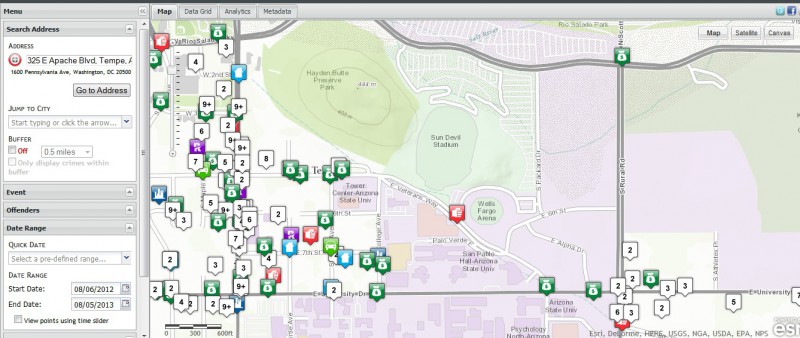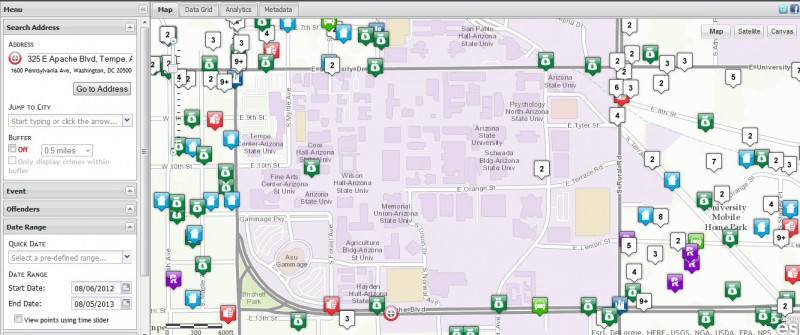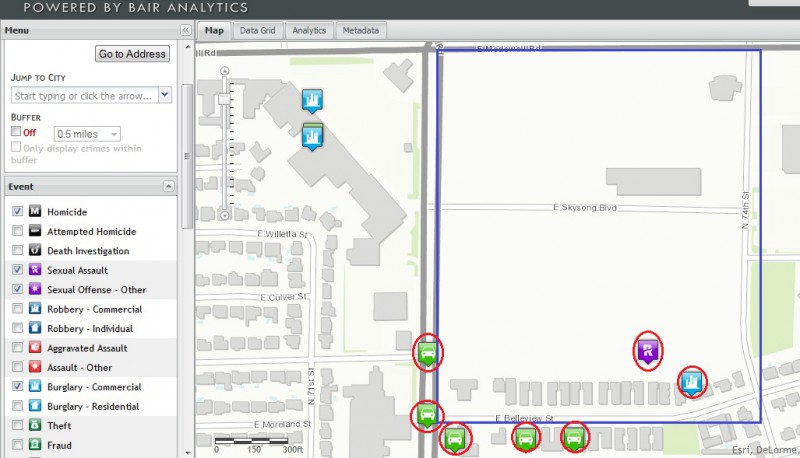We have made several posts on The Integrity Report about why Arizona State University’s campuses are unsafe, and the issue of handling an active shooter on campus has been a reoccurring topic (click here to view our previous posts about active shooters).
To adequately prepare for a possible active shooter scenario, ASUPD’s approach must be three-pronged: ASUPD needs more officers to be able to respond/manage major situations, ASUPD needs to have a clear/common sense policy, and ASUPD needs to give its officers appropriate training.
Whether or not ASUPD will actually recruit and retain additional officers remains to be seen, but Command staff has known for years that its ability to deal with an active shooter is nonexistent. Several years ago, former Arizona Republic intern Matt Haldane interviewed then-Commander Jim Hardina about active shooters and guns on campus (view the video here). Hardina was unable to articulate what ASUPD’s policy in regards to dealing with an active shooter was!
Here are some excerpts from the interview:
(at :27)
In regards to ASUPD’s policy about active shooters:
Matt Haldane: And does ASU have a specific way of doing that? [referring to handling an active shooter]
Jim Hardina: Well, uh, the police department has a policy and the policy is…you…find the shooter…and…stop them from shooting. And you can’t really say you should do A, B, C, and D, because each situation’s dynamic, so, you know, each, uh…you’ll never have the same situation twice. So basically, the police’s role is to the stop the shooter from shooting, and the public’s role is to put themself (sic) in a position where they’re both safe. And again, you can’t have a specific policy because each situation is uh, different.
In regards to the active shooter training ASUPD’s officers receive:
(at 1:45)
MH: And…we spoke with a former Marine who was suggesting that ASU Police go through the same type of training that um, soliders do, in a combat situation where they’re able to quickly distinguish between a shooter and a bystander. What type of training do police officers receive?
JH: Um, I was in the Marine Corps also, and its a little bit different, what you don’t want is you don’t want police officers training with military tactics because you think soldiers…their job is to attack people and kill people…and that’s what they do. We don’t train police officers with that same kinda mindset clearing buildings, you know, looking to kill people. Um, what we train officers to do is exactly that, identify who’s a threat and who is not a threat, and um, act on the side of not shooting, as opposed to shooting. Police officer’s role is to take the least restrictive amounts to controlling somebody, which, the last resort would be actually killing them.
(So according to Hardina, in an active shooter situation, you shouldn’t be trying to kill the person (threat) who is actively maiming or killing innocent civilians. Interesting.)
Also, according to Hardina, 97% of all campus shootings involve a domestic violence dynamic (3:15); yet according to an FBI report addressing targeted violence at institutions of higher education, only 33.9% of incidents involving a weapon were domestic violence related (and firearms comprised only 54% of weapons used in targeted violence on campus).
So…what is ASUPD’s policy in regards to dealing with an active shooter?
First of all, the policy is titled “Rapid Response and Deployment” PSM 461-03, and it is not specifically limited to an active shooter; it also incorporates active terrorism. The initial officer on scene is responsible for notifying SWAT or hostage negotiators (neither of which ASU has). After a determination is made that tactical intervention is necessary, “available officers shall form a contact team and deployed as trained”. NONE of ASUPD’s officers receive training in forming tactical teams in a rapid response scenario.
Also, “the contact team should wear soft body armor and ballistic helmets and deploy service weapons, patrol rifles, and shotguns
with slug ammunition, if possible. The team should deploy according to departmental training“.
ASUPD’s officers are lucky if their body armor is replaced before it falls apart or expires; the “patrol riles” purchased by the department are currently in the custody of Chief Pickens and the rest of Command staff (who wouldn’t respond to a situation like this). Once again, no member of the department receives ANY departmental training that would adequately prepare them for this scenario.
This policy is not applicable to any member of the department, as NOONE has the proper training that falls in line with this policy (nor does ASUPD have the resources–SWAT, hostage negotiator, rifles–it cites its officers should use). The unofficial policy of dealing with a scenario like this? Call Tempe PD.
What type of training do ASUPD’s officer’s receive to deal with active shooters?
In addition to not receiving tactical ANY training to deal with an active shooter, the only post-academy training ASU’s officers receive is limited to free training ASU provides to all its students, faculty, and staff (check it out here). This video is geared toward students/employees faced with an active shooter, and does NOT provide any sort of tactical training to a person working in a law enforcement capacity.
As we’ve previously mentioned, it is only a matter of time until ASUPD is forced to deal with an active shooter. The indifference/incompetence allowed to fester on the top level of the department will ultimately come at the expensive of an innocent civilian or a fellow officer.







